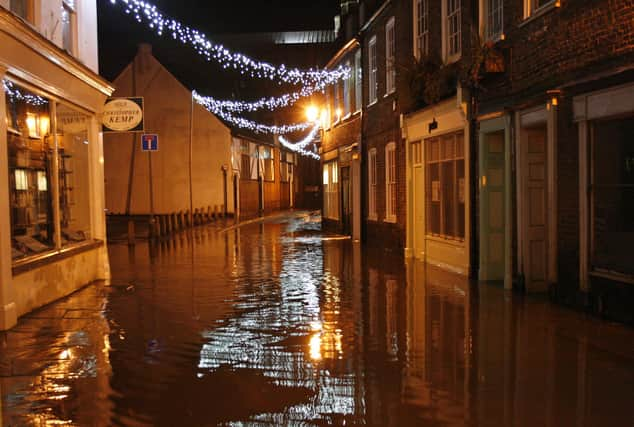Environment Agency reflects on 10th anniversary of Lincolnshire and East Anglia floods


On December 5, 2013, a large storm coupled with high tides generated a coastal surge along the whole of the east coast of England.
In some areas, the tides were higher than those in the devastating floods of 1953.
Advertisement
Hide AdAdvertisement
Hide AdMore than 30 severe flood warnings (the highest level of warning the EA issues) were sent out to communities across Lincolnshire, Essex, Suffolk, and Norfolk.
Evacuees, in some areas, numbered in the thousands, with many staying in rest centres overnight.
In other areas, the water came in quickly and unexpectedly – in Lincolnshire alone 44 people had to be rescued.
A spokesman for the EA said: “The flood warnings and defences in place at the time meant that there was no loss of life. However, the devastating impact left by the flooding on homes and communities cost millions and led to “further investment to reduce the impact of flooding.
Advertisement
Hide AdAdvertisement
Hide Ad“In the decade since, millions of pounds have been spent to reduce flood risk on the east coast. In total, in Suffolk, Norfolk and Essex over £300million has been spent on sea and flood defence projects since 2013. In Lincolnshire, this investment was over £328million between 2013/2014 and 2021/2022.”
One of the biggest investments has been in Boston, which saw some of the most serious impacts in 2013, with more than 800 homes being flooded across 55 streets. The £120-plus million Boston Barrier Scheme is a national priority project, the centrepiece of which – a tidal flood gate in the River Haven – has been fully operational since December 2020 and can be raised in about 40 minutes to reduce flood risk to more than 13,000 homes and businesses in the town. Phase two of the scheme, which is currently in the design phase, aims to ensure Boston’s tidal flood resilience against future climate change predictions.
The 2013 tidal surge also had a major impact on communities around the Humber, which led to the formation of the Humber 2100+ Partnership. The partnership, made up of 11 local authorities and the EA supported by Internal Drainage Boards (IDBs) and Natural England, is working to develop a strategy for managing sea level rise and tidal flood risk around the estuary for the next 100 years.
In parallel with the development of the Humber 2100+ Strategy, investment on the ground has continued, the EA said.
Advertisement
Hide AdAdvertisement
Hide AdAn example of this can be seen in South Ferriby. More than 150 properties had their flood risk reduced by £14million defences which include 13 metre flood gates across the A1077. Together the defences also protect 3,000 hectares of agricultural land as well as infrastructure including the Scunthorpe to Grimsby railway line.
In East Anglia, Great Yarmouth, one of the areas impacted by the tides, has also seen investment. Earlier this year the second phase of works to improve defences in the town, known as Epoch 2, was completed. The £42.9million works saw improvements to 4km of flood defence walls in the town, improving protection to 2,115 properties. A business case for Epoch 3 of the long-term investment programme for Great Yarmouth is currently in development.
In Suffolk, the Environment Agency is a partner in the Lowestoft Flood Risk Management Project. The town was also impacted when the surge hit with the railway line to Ipswich being closed for five days because of the flooding.
“The Environment Agency continues to urge people to plan ahead for flooding by finding out if their property is in an at-risk area; signing up for free flood warnings; and knowing in advance what to do,” the spokesman said.
Further information is available on all these steps and more at https://check-for-flooding.service.gov.uk/alerts-and-warnings and by calling Floodline on 0345 988 1188.